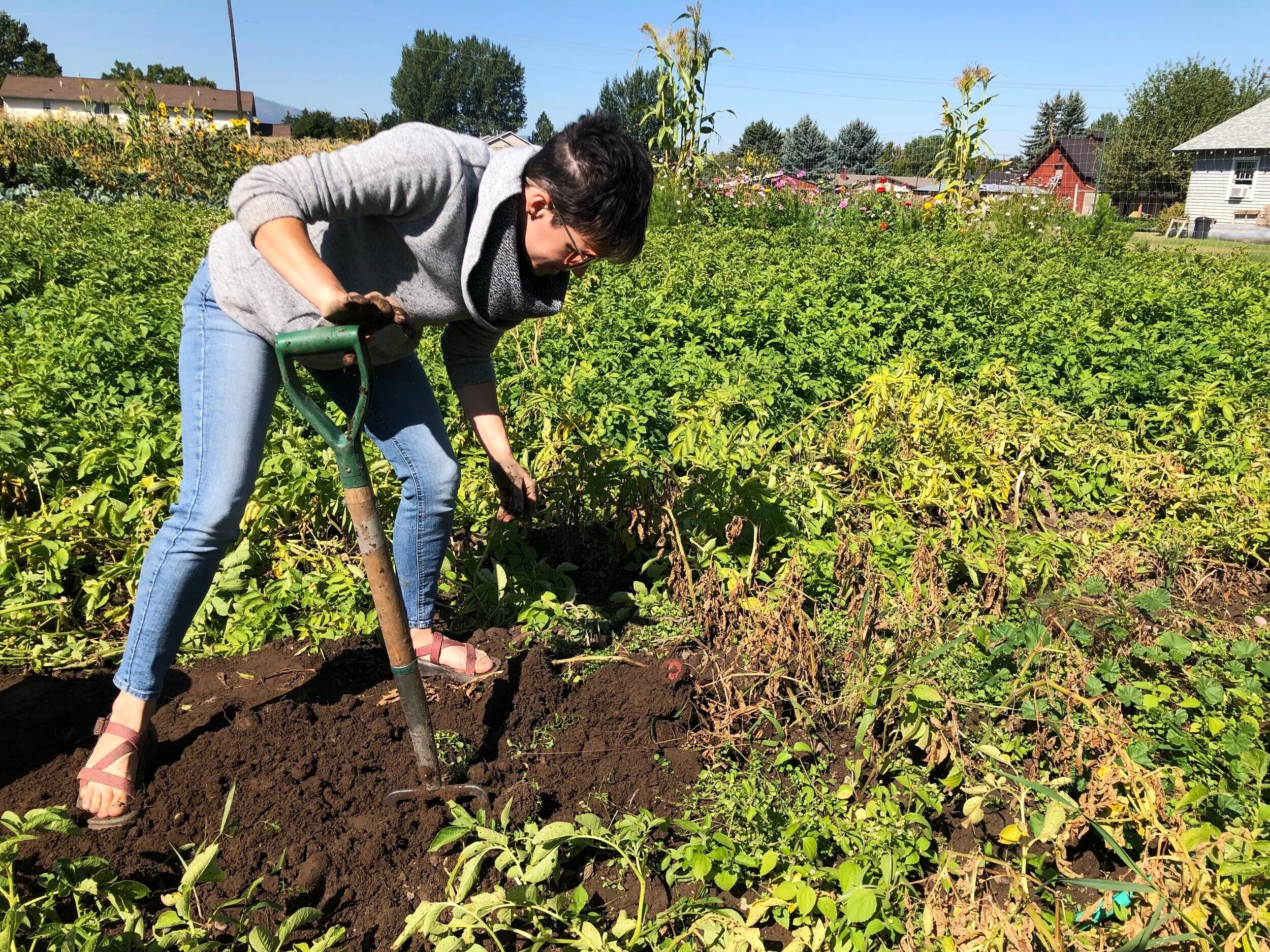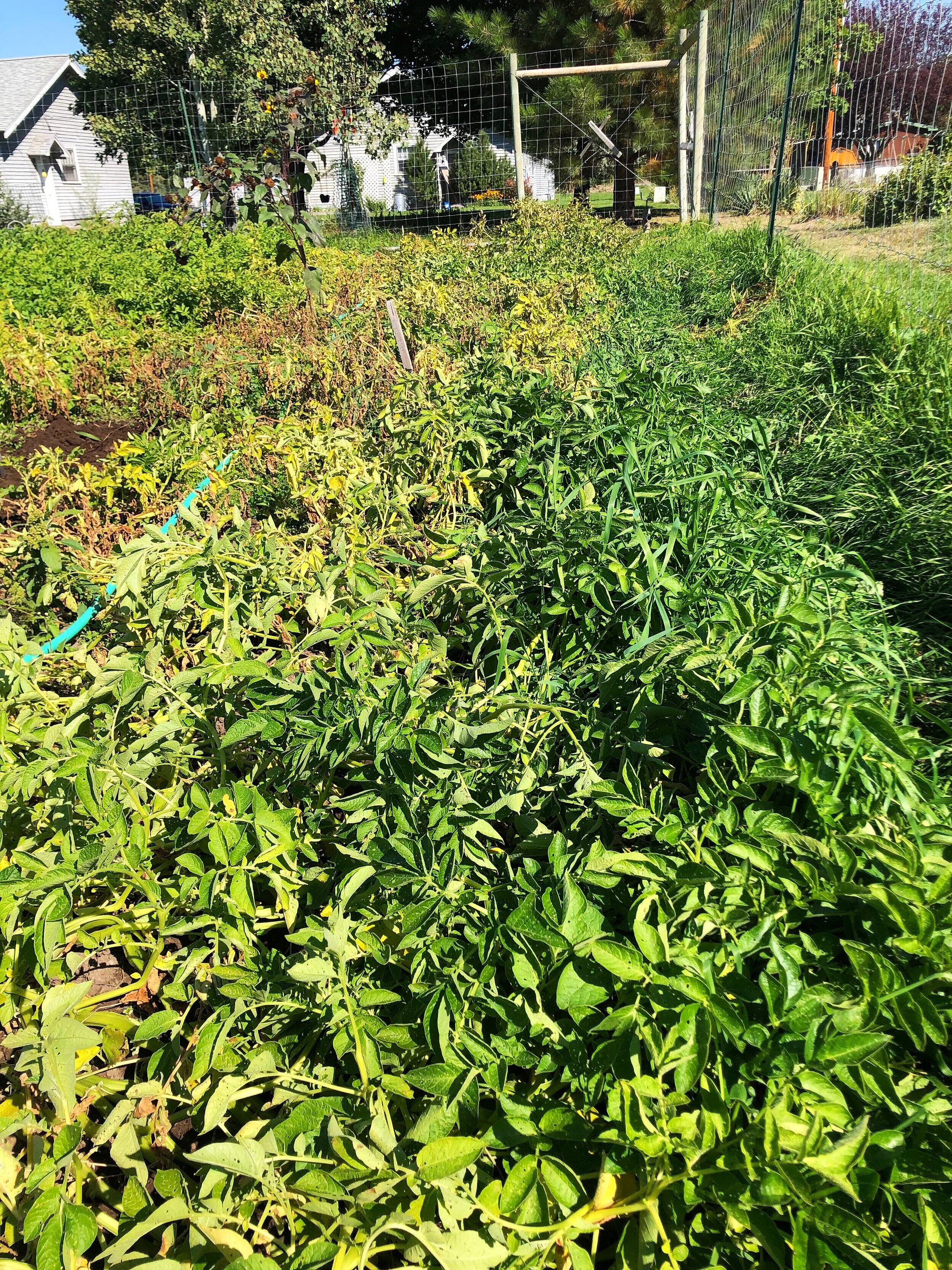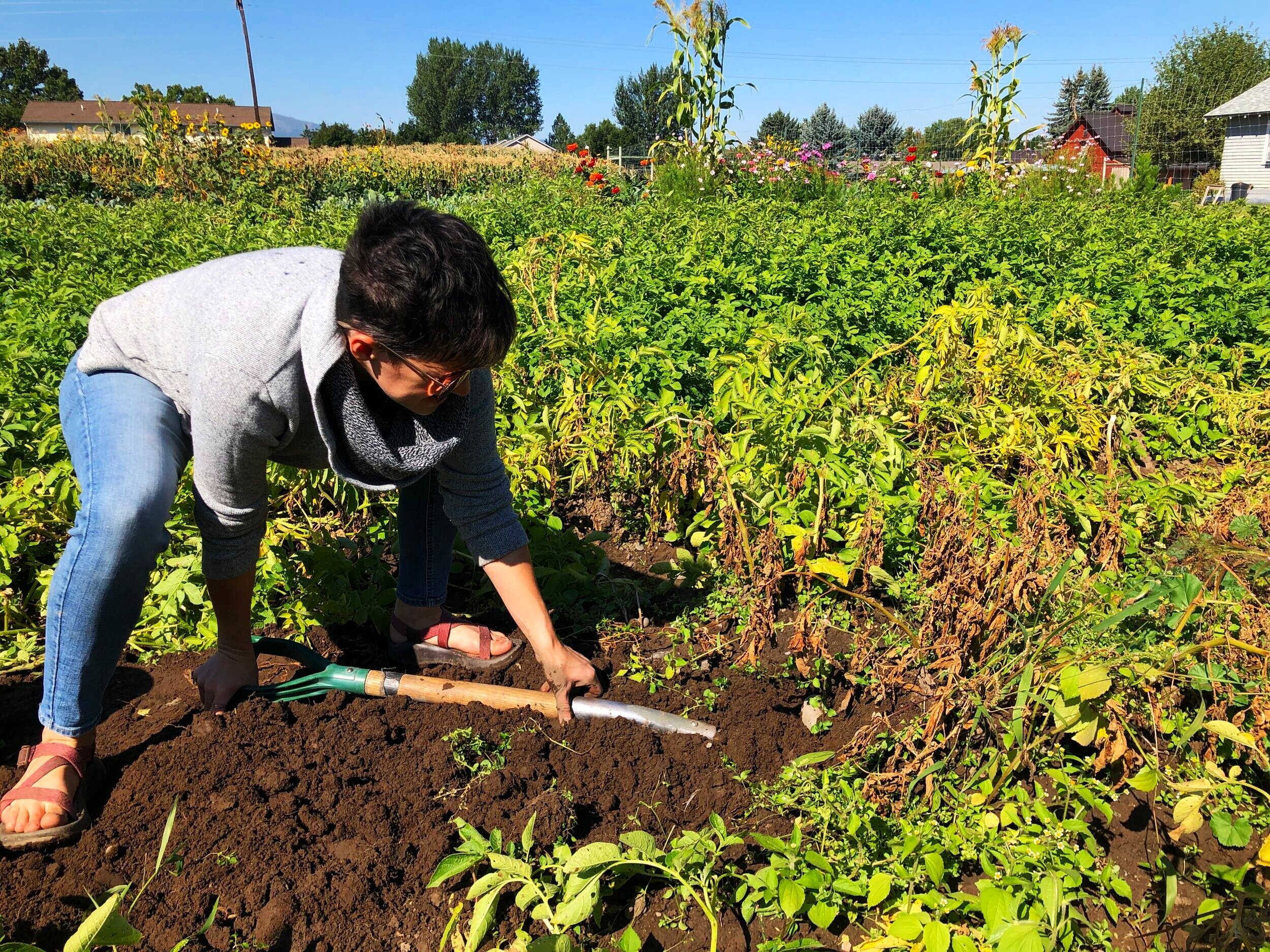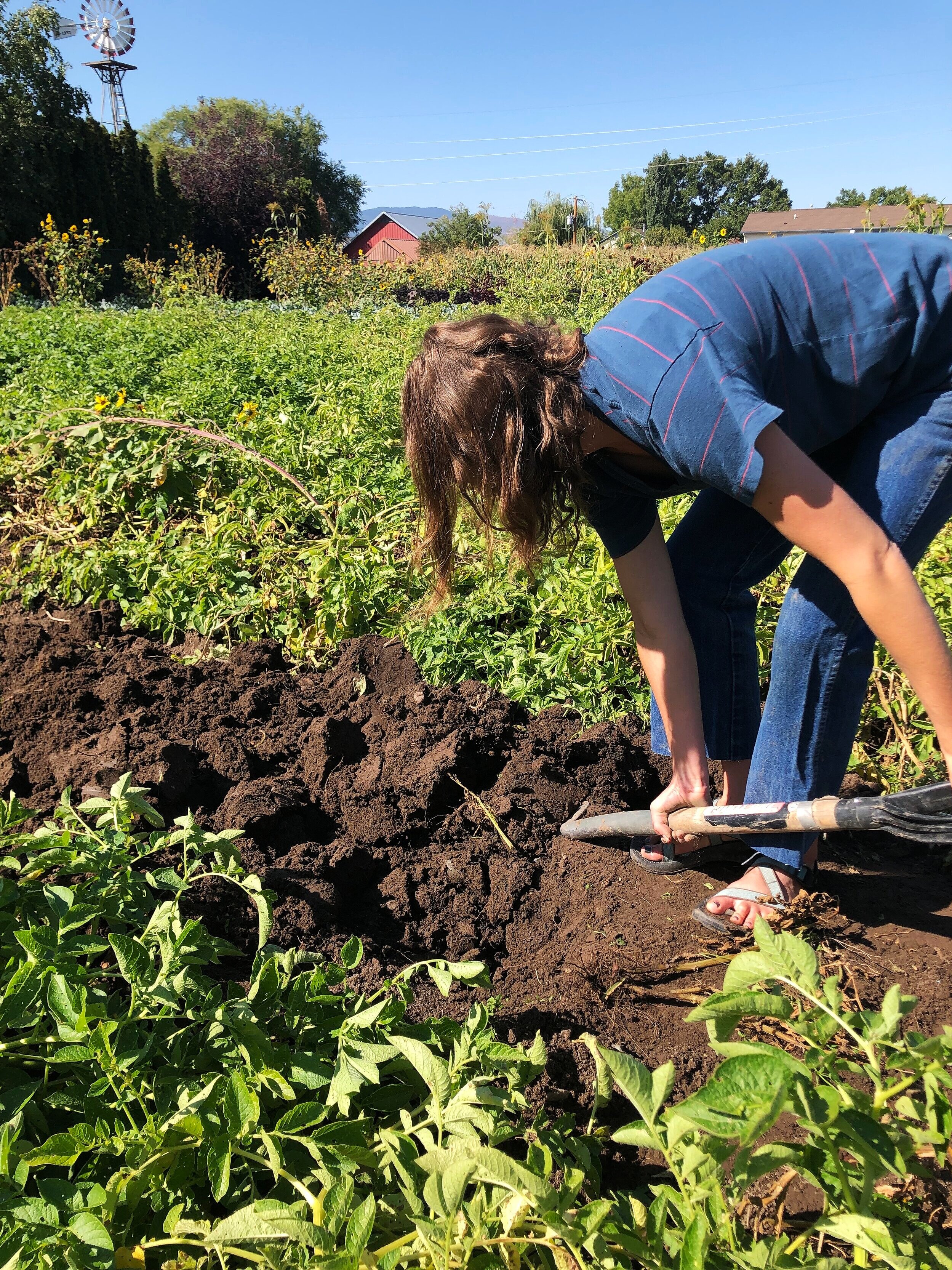It's Potato Time
These tuber vegetables can be planted as soon as the ground is ready to be worked on in the spring. They, unlike many other vegetables, thrive in darkness, hence why they grow underground. Their stems grow above ground and are bright green which produce non-edible flowers. This article will give tips and tricks on how to plant and harvest these resilient vegetables.
5 Frequently Asked Questions
What is a potato seed?:
A seed potato is a potato that has been grown to be replanted to produce a potato crop. Potatoes of the same variety are genetically identical to their parents, so the ‘seed’ that you’ll find to grow potatoes looks like, well, a potato. These however differ from the ones you find in a grocery store which have been treated with a sprout-inhibitor that prevents the potatoes’ eyes from developing while in storage and on the shelf.
2. Why do you hill potatoes?:
Hilling potatoes will produce the following benefits: weed management, quality control, drainage, and a yield increase.
3. How do you know when potatoes are ready to harvest?:
Different varieties of potatoes will have different Days To Maturity (DTM). It is important to know the variety you are growing and to know when you planted them to give you an idea of when they will be ready to harvest. Generally potatoes will be present after 60 days but they will be small and fragile. However, most varieties will have good sized ones ready to harvest after 90 days.
4. Can I plant potatoes from my harvest and/or my CSA share from last year?:
Yes! When you are replanting them, trim the eyes back and cut them into smaller pieces. Be careful when cutting them to have at least two eyes on every piece! More on this below.
5. How should I store my potatoes?:
The ideal storage conditions for potatoes includes a well ventilated, dark, and cool area with a temperature ranging from 35-40 degrees Fahrenheit. Research the variety you have and see how well they will store.
Cutting Potatoes Before Planting
To have a successful potato crop it is important to set your seed potatoes in an area where they will be exposed to light and temperatures between 60-70 degrees fahrenheit a week or two before you plan to plant them. This will allow the potatoes to start sprouting. As mentioned above, use a knife to cut the potatoes into smaller pieces a day or two before planting them. You wait a day or two so the potato can form a thick callus over the new cuts, which will help prevent rotting. When cutting the potatoes, each piece should have 1 or 2 eyes or buds. However, when it comes to smaller potatoes (around the size of a golf ball) you can plant them whole.
Planting Potatoes in the Garden
Potato plants will only begin to grow once the soil reaches 45 degrees fahrenheit and the soil should be moist but not over-watered. These vegetables can tolerate a light frost, but if there will be a big drop in temperature you should provide some sort of protection. When it comes to actually planting the potatoes you should:
Dig trenches that are about six to eight inches deep. Keep the rows about three feet apart. If your space is limited and/or you would like to grow only baby potatoes, you can decrease the spacing between plants.
In the trenches, plant a seed potato every 12-15 inches. The “eye” should be facing upward and begin with only filling the trench with 4 inches of soil.
Let the plants start to grow and then continue to fill in the trench and even mound the soil around the plants as they continue to grow. This is called “hilling” and it protects the potatoes from the sun, as well as supports the plant.
It is important to keep your potato vines well watered throughout the warmer months, especially when the plants are flowering and immediately after the flowering stage! Potatoes will have the most success with 1-2 inches of water per week. When the leaves and stems turn yellow and begin to die back, stop watering. This will help start curing the potatoes.
Harvesting Potatoes
When you decide it is ready to harvest your potatoes you’ll need a shovel or a fork. When you start to dig them up, be careful not to scrape, bruise or cut the tubers as damage to the potato will cause rotting to occur during storage and should be used as soon as possible. The steps are as follows:
Dig them up gently on a dry day starting about 12 to 18 inches from the edge of the leaves of your plant. After you have removed the first shovel full, check the removed dirt for potatoes. Then, using your hands, check the edge of the hole closest to the plant to see if you can feel any potatoes. If you don't feel any potatoes, dig a few inches closer to the plant and repeat as necessary.
Remove only the biggest potatoes and leave the smaller ones alone so they can continue to grow.
Don’t leave harvested potatoes in the sun too long, as too much sunlight can turn them green and toxic.
Sources
Heckler, Hillary. (2014, March 20). Frequently Asked Questions About Growing Potatoes. Country Farm and Home. https://chathamfarmsupply.com/resources/frequently-asked-questions-about-growing-potatoes#:~:text=Generally%2C%20new%20potatoes%20will%20be,summer%20to%20grow%20great%20potatoes
Seed Savers. (2017, January 6). How to Grow Potatoes. Seed Savers Exchange. https://blog.seedsavers.org/blog/tips-for-growing-potatoes







